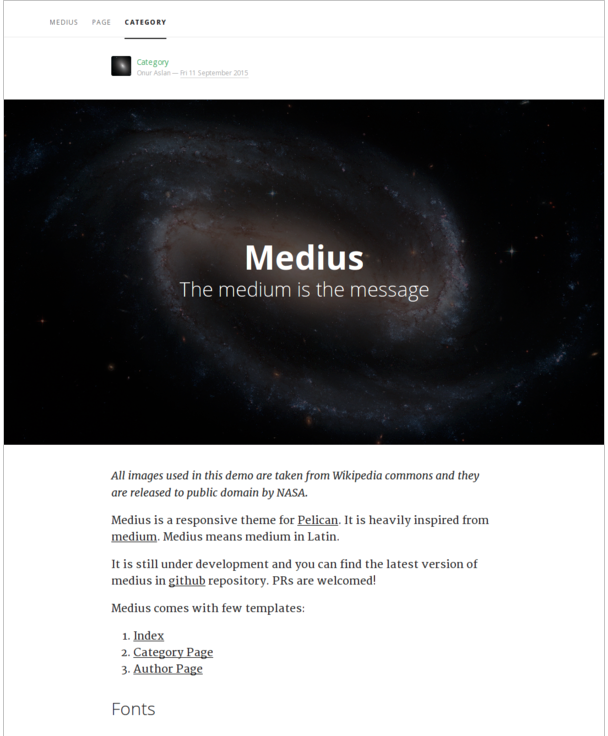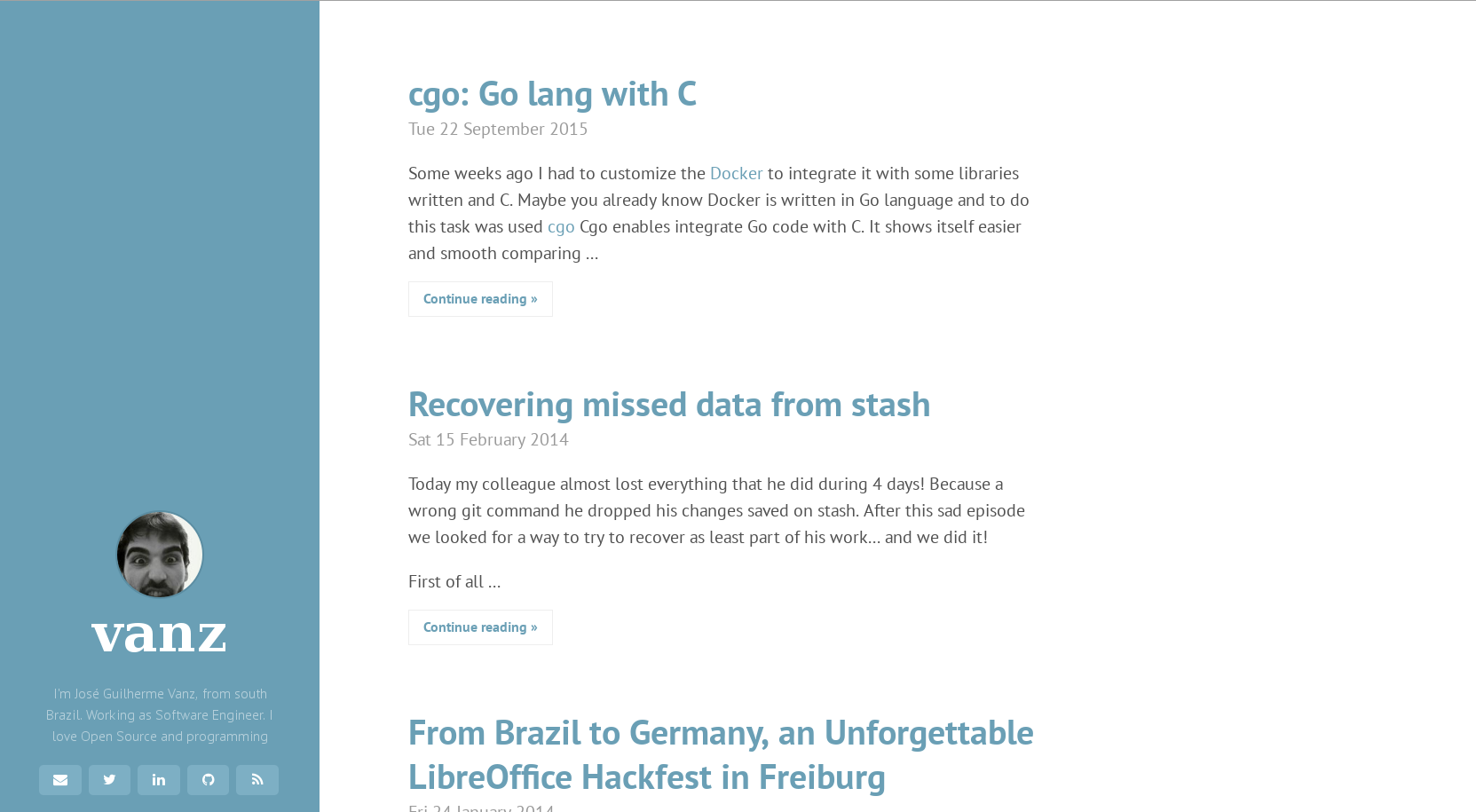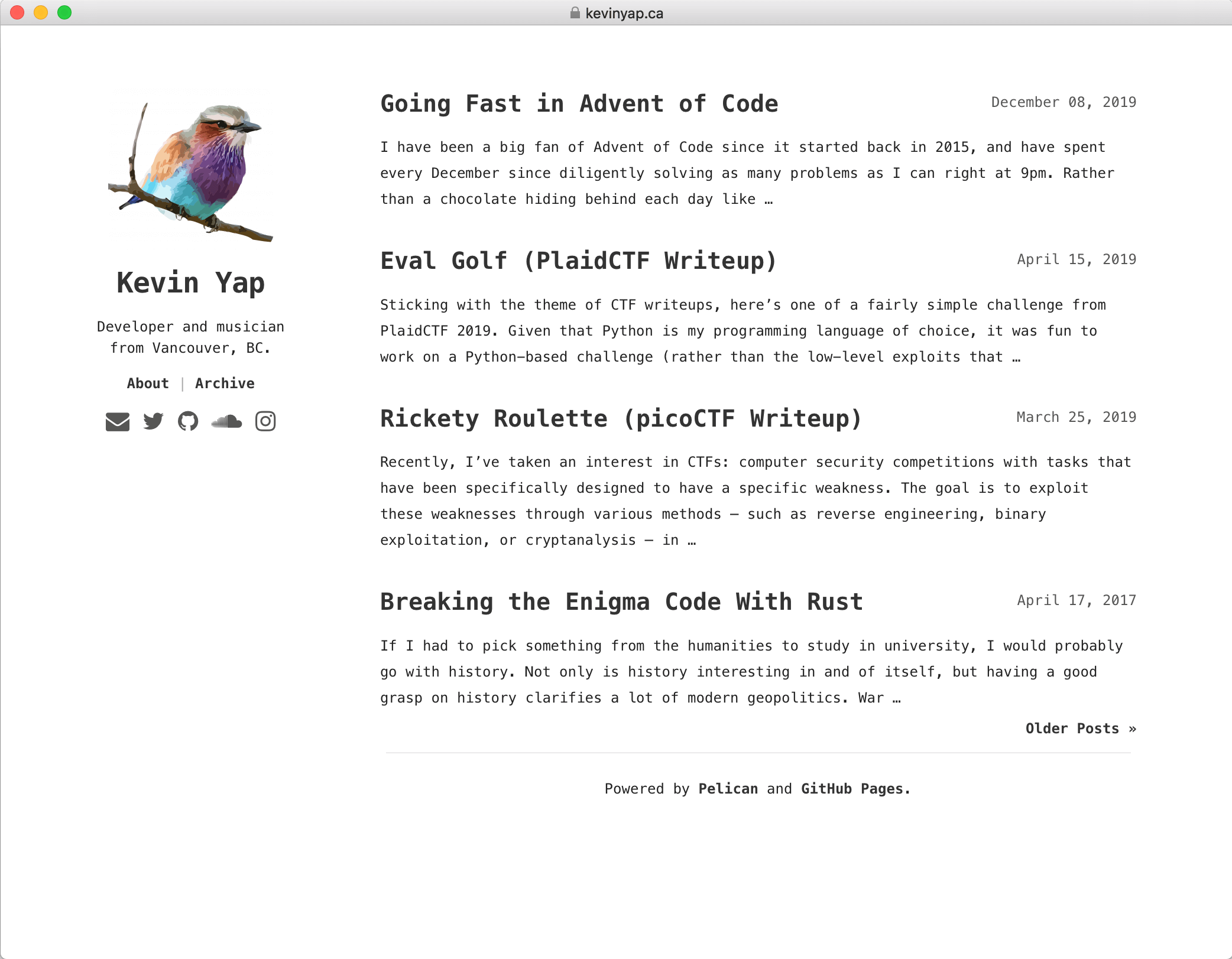Creating and deploying static websites using Markdown and the Python library Pelican
Published:
- Theme: medius  Demo website: [medius](https://onur.github.io/medius/medius.html) by [Onur Aslan](https://onur.github.io/medius/author/onur-aslan.html)
- Theme: hyde  Demo website: [hyde](http://jvanz.com/) by [vanz](http://jvanz.com/)
- Theme: pneumatic  Demo website: [pneumatic](https://kevinyap.ca/) by [Kevin Yap](https://kevinyap.ca/about/)
Details on how to use these themes will be discussed in the [Part 1](https://shahayush.com/2020/03/web-pelican-pt1-setup) of this article series. I just wanted to give some overview on how the website will look like in the end. ## Advantages of Pelican over WordPress You may wonder that the same thing can be achieved using WordPress and has a wider community compared to Pelican. So, why use Pelican? I have listed a few advantages of Pelican over WordPress written by [Vincent Cheng](http://www.vcheng.org/) in his article [Migrating from Wordpress to Pelican](http://www.vcheng.org/2014/02/22/migrating-from-wordpress-to-pelican/?fbclid=IwAR0dlc-OGv6B0fQ7rGSP5lHY3Ei0oNT6k9WwvX-_TB2yU_dC51uj1Y9gWkI). 1. **speed:** a static blog is going to be faster than a dynamically generated site, no matter how much you try to optimize your Wordpress site/cache/database. This site now serves up nothing more than HTML, CSS, and JS files. 2. **simplicity:** as mentioned above, there's no need to set up, configure, and optimize your Wordpress installation. Simplicity in this sense also refers to the fact that this site is now powered by a smaller, simple to understand stack, rather than a giant and much more complex PHP stack that regularly attracts attackers... 3. **improved workflow:** you can use your preferred editor and your preferred VCS to create and keep track of your blog posts. Markdown is a nice bonus as well (it's the sweet spot between a WYSIWYG editor and raw HTML). 4. **mobility/deployment:** static site = easier to move around (just copy the files; there's no database to worry about) and deploy (and often cheaper to deploy; you can do so for free with Github Pages, for example). 5. **less cost:** Switching to Pelican means that you get to move off of Wordpress.com infrastructure, hence no more ads (and no need to pay $30/yr to get rid of them), no restrictions on the amount and type of content you upload, and being able to use your own domain name (without having to pay extra for it), and of course not having to rely on a third-party to host your blog. ## Let's get started Now that you have got an overall insight of what this article series is about along with the benefits of using Pelican, get started by building your own website. For ease, I have divided the article into 6 parts as: - [**Part 1: Setting up Pelican - Installation and Theme**](https://shahayush.com/2020/03/web-pelican-pt1-setup) - [Part 2: Writing content using Markdown](https://shahayush.com/2020/03/web-pelican-pt2-markdown) - [Part 3: Hosting your website to GitHub Pages and custom domain](https://shahayush.com/2020/03/web-pelican-pt3-hosting) - [Part 4: Setting up Travis-CI for automating deployment](https://shahayush.com/2020/05/web-pelican-pt4-travisci) - [Part 5: Integrate Disqus comments and Google Analytics with Pelican](https://shahayush.com/2020/05/web-pelican-pt5-disqus-analytics) Click on the respective links to get started.
